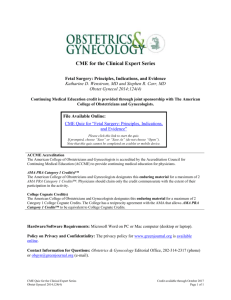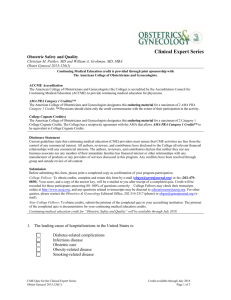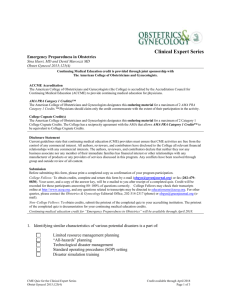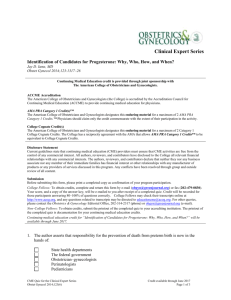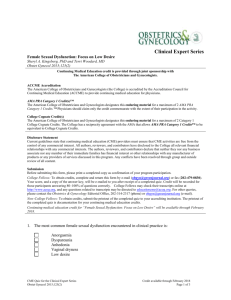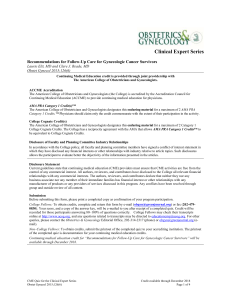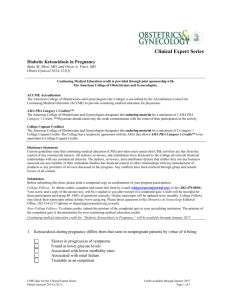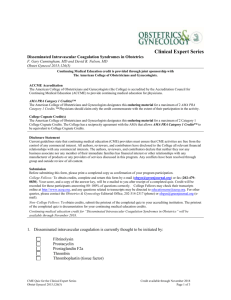Treating Spontaneous and Induced
advertisement
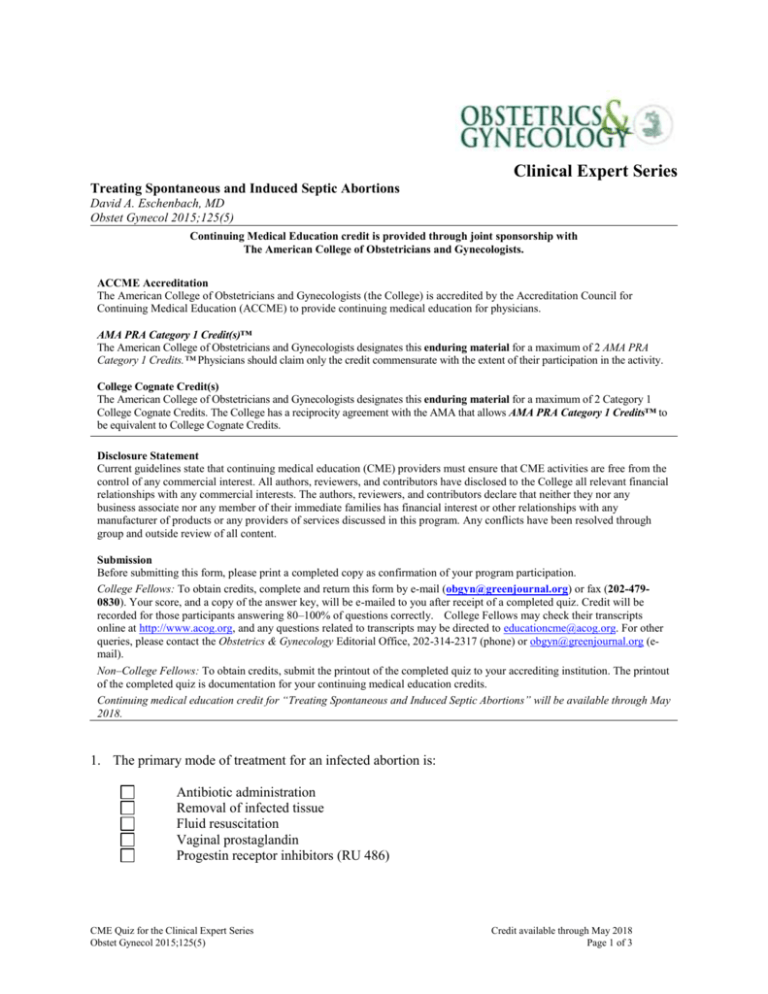
Clinical Expert Series Treating Spontaneous and Induced Septic Abortions David A. Eschenbach, MD Obstet Gynecol 2015;125(5) Continuing Medical Education credit is provided through joint sponsorship with The American College of Obstetricians and Gynecologists. ACCME Accreditation The American College of Obstetricians and Gynecologists (the College) is accredited by the Accreditation Council for Continuing Medical Education (ACCME) to provide continuing medical education for physicians. AMA PRA Category 1 Credit(s)™ The American College of Obstetricians and Gynecologists designates this enduring material for a maximum of 2 AMA PRA Category 1 Credits.™ Physicians should claim only the credit commensurate with the extent of their participation in the activity. College Cognate Credit(s) The American College of Obstetricians and Gynecologists designates this enduring material for a maximum of 2 Category 1 College Cognate Credits. The College has a reciprocity agreement with the AMA that allows AMA PRA Category 1 Credits™ to be equivalent to College Cognate Credits. Disclosure Statement Current guidelines state that continuing medical education (CME) providers must ensure that CME activities are free from the control of any commercial interest. All authors, reviewers, and contributors have disclosed to the College all relevant financial relationships with any commercial interests. The authors, reviewers, and contributors declare that neither they nor any business associate nor any member of their immediate families has financial interest or other relationships with any manufacturer of products or any providers of services discussed in this program. Any conflicts have been resolved through group and outside review of all content. Submission Before submitting this form, please print a completed copy as confirmation of your program participation. College Fellows: To obtain credits, complete and return this form by e-mail (obgyn@greenjournal.org) or fax (202-4790830). Your score, and a copy of the answer key, will be e-mailed to you after receipt of a completed quiz. Credit will be recorded for those participants answering 80–100% of questions correctly. College Fellows may check their transcripts online at http://www.acog.org, and any questions related to transcripts may be directed to educationcme@acog.org. For other queries, please contact the Obstetrics & Gynecology Editorial Office, 202-314-2317 (phone) or obgyn@greenjournal.org (email). Non–College Fellows: To obtain credits, submit the printout of the completed quiz to your accrediting institution. The printout of the completed quiz is documentation for your continuing medical education credits. Continuing medical education credit for “Treating Spontaneous and Induced Septic Abortions” will be available through May 2018. 1. The primary mode of treatment for an infected abortion is: Antibiotic administration Removal of infected tissue Fluid resuscitation Vaginal prostaglandin Progestin receptor inhibitors (RU 486) CME Quiz for the Clinical Expert Series Obstet Gynecol 2015;125(5) Credit available through May 2018 Page 1 of 3 2. In 2013, the worldwide death rate from abortion was roughly equal to that of maternal death following delivery due to: Embolism Hemorrhage Sepsis Anesthetic complication Uterine rupture 3. Worldwide, the most common cause of septic abortion is from: Premature rupture of the membranes Unsafe methods to terminate the pregnancy Maternal septicemia Vaginal infection Maternal immunocompromise 4. The most common complication of abortion is: Sepsis Trauma-induced hemorrhage Retained products of conception Uterine scarring Infertility 5. Antibiotic effectiveness is reduced for infection from toxin-producing bacteria such as Clostridium species or Group A streptococcus because of: Bacterial resistance Local tissue necrosis Polymicrobial coinfection Reduced uterine blood flow in early pregnancy Antibiotic contraindications in early pregnancy 6. Septic abortions associated with Clostridium sordellii or other Clostridium species cause distant organ damage from: Septicemia Toxins A leukemoid reaction (white blood counts over 50,000) Host immunosuppression Hypotension CME Quiz for the Clinical Expert Series Obstet Gynecol 2015;125(5) Credit available through May 2018 Page 2 of 3 7. Septic abortion in the absence of maternal fever may occur with infections caused by: Anaerobic peptostreptococcus Clostridium sordellii Escherichia coli Group A streptococcus Neisseria gonorrhoeae 8. The main purpose of aerobic and anaerobic blood and cervical cultures in cases of suspected septic abortion is to identify: Antibiotic resistance Toxin-producing species Other sexually transmitted diseases Evidence of illegal activity Risk for future recurrence 9. The most important factor in the death from septic abortion is: Gestational age Delayed surgical therapy Maternal age Infectious agent Delayed antibiotic therapy College ID Number: Name: Address: City/State/Zip: E-mail Address: Actual time spent completing this activity (you may record up to 2 hours): CME Quiz for the Clinical Expert Series Obstet Gynecol 2015;125(5) Credit available through May 2018 Page 3 of 3
